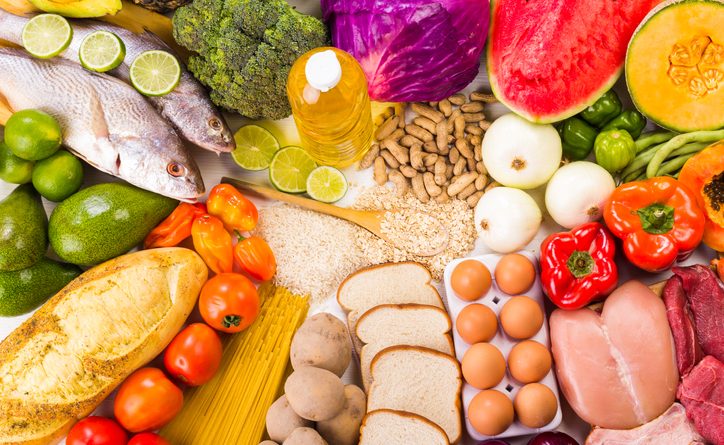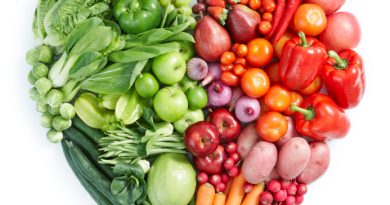The latest Dietary Guidelines
At regular intervals, the national government discharges healthful rules dependent on research and logical proof. These rules are significant as they address critical nourishment-related medical problems confronting the U.S. populace like diabetes, malignant growth, food uncertainty, and cardiovascular sickness. The rules additionally give the premise to government sustenance strategy, food help projects, instruction, and effort. Before the public authority delivers their last rules the Dietary Guidelines Advisory Committee (DGAC), made out of broadly respected wellbeing and nourishment specialists, audits the science and makes suggestions that might make it into the last form of the dietary rules. Last week the DGACs report was delivered, for certain fascinating new suggestions being made. Here are some significant important points from the current year’s report:
The Repeat Performers
The vast majority of the nourishment data has not changed. It’s not shocking that the large champs in a reasonable eating regimen are high admissions of organic products, vegetables, entire grains, low-fat dairy, fish, lean meats and poultry, vegetables, and unsaturated vegetable oils. Honestly, this has been the situation for a really long time! On the other hand, restricting the utilization of food sources high in soaked fat and added sugar like handled meats and sugar-improved food varieties and drinks have constantly been displayed to diminish the danger of all-cause mortality and numerous persistent illnesses, most outstandingly coronary illness.
Added Sugars
The DGAC report made an amazing suggestion to diminish added sugar from 10% to 6% of complete calories. The suggestion for added sugar previously seemed 5 years prior in the 2015-2020 dietary rules to be close to 10% of your complete calories. For a normal 2,000 calorie diet that would mean 200 calories or 50 grams greatest from added sugar. The current proposal to diminish added sugars to 6% of absolute calories would mean a limit of 120 calories or 30 grams from added sugar. This is a decrease from 12.5 to 7.5 teaspoons of granulated sugar, for instance, each day.

Fats
In accordance with 2015-2o2o proposals, the DGAC report actually suggested under 10% of calories from soaked fat each day. What’s more, they prescribed to downplay cholesterol consumption. They recommend supplanting immersed fats with unsaturated fats (explicitly polyunsaturated unsaturated fats) to assist lower with adding up to cholesterol and LDL, or awful cholesterol. Supplanting immersed fats, be that as it may, with refined carbs isn’t suggested as it can build fatty oils and decline HDL (great cholesterol).
0 to 24 Months
Perhaps the greatest change in these rules is the new suggestions for pregnant and lactating ladies and kids ages 0 to two years. This is the primary year since the rules were set up that these populaces have been talked about. The board suggested that babies ought to be bosom taken care of for the initial half year of life as the length of breastfeeding can impact the decreased danger of a few constant infections.
Another intriguing proposal that is especially in accordance with momentum research is the presentation of high allergen food varieties. Examination shows that presenting high allergen food varieties like peanuts as ahead of schedule as 4 to a half year can really lessen the danger of the sensitivity fundamentally. Regardless of whether a baby is at okay for food hypersensitivities, they can in any case profit from the early prologue to these food varieties.
Also, a suggestion made was concerning fish utilization. The DGAC observed that ebb and flow research recommends utilization of low-mercury fish like salmon, sardines, and pollock can uphold intellectual advancement in little youngsters.
Pregnancy and Lactation
In light of the logical proof, it is significant that pregnant and lactating (nursing) ladies devour food sources inside broad, solid dietary examples previously and additionally during pregnancy which might assist with diminishing the danger of gestational diabetes, hypertensive problems of pregnancy, and preterm birth. Moreover, the DGAC noticed that there gives off an impression of being no relationship between utilization of normal allergenic food sources, like dairy or eggs, and hazard of food sensitivities, asthma, and related atopic sickness.
Liquor
As indicated by the DGAC report, proof proposes that drinking less is better for wellbeing contrasted with drinking more. Further, the research observed that among people ages 20 to 64 years old, liquor offers over 20% of all out calories from refreshments. Thusly, the board made the suggestion to bring down the rule for men to a limit of 1 beverage each day. The suggestions for ladies of a limit of 1 beverage each day continued as before. One beverage is characterized as 12-liquid ounces of brew, 5 liquid ounces of wine, and 1-1/2 liquid ounces of 80-proof fluid (like rum or vodka). This new proposal to cut the most extreme day-by-day measure of liquor for men by 50% isn’t generally welcomed by everybody in established researchers.

Supper Frequency
One more region that was at last tended to by the DGAC is how frequently would it be advisable for you to eat? The current rules talk about the sorts of food varieties and the amount to eat, however how regularly you eat is additionally significant. All things considered, research shows that Americans report 5.7 eating events each day (that incorporates suppers and tidbits). Further, research shows that 64% of the American populace report eating three suppers each day refrains 28% of Americans who eat just two dinners each day. Contrasted with the people who ate two dinners each day, the individuals who ate three suppers each day had a superior quality eating routine.
There was likewise some fascinating information on late-night snackers. By and large. Late evening eating will in general incorporate liquor, and food sources high in added sugar, sodium, and immersed fats. These are all supplements and food sources that ought to be devoured with some restraint.
Primary concern: It is imperative to remain side by side in conversations relating to the strength of our country. Curiously, throughout the long term, the proposals haven’t significantly changed. The DGAC report is just proposed changes, yet the last form of the 2020-2025 dietary rules for Americans will be delivered over the course of the following half year or thereabouts. Stay tuned for a refreshed post when those are delivered.




